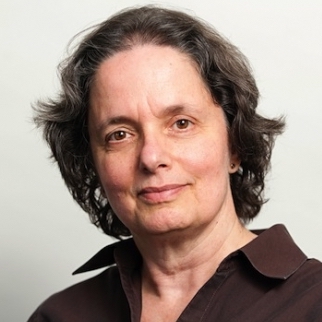It’s rare that we are given an opportunity to look inside the life of someone whose job it is to study our lives, but that’s exactly what happens in “Not by Chance Alone: My Life as a Social Psychologist” by Elliot Aronson (Basic Books: $27.50).
Aronson, author of a leading text on social psychology titled “The Social Animal” and nearly two dozen other books, has devoted his life to the workings of the human mind and, in particular, the ways in “circumstances, generations, cultures, ideas, and guiding principles get inside individuals and shape their actions.” His autobiography, however, is something far more intimate and, at the same time, a courageous effort to answer some of the most fundamental questions of human destiny.
“So, how much of our lives is determined by luck, random opportunity, chance?” he muses. “How much comes from the genetic hand we are dealt at birth? How much from what we make of the chances we get?”
Born in 1932, Aronson describes his Depression-era childhood on the Mystic River in a town outside Boston, a painfully shy child who “stammered and blushed” when called upon in class, the prey of bullies who set upon him on the way home from Hebrew school, but no less a victim of his own father’s rage. “I will give you such a smack in the face,” his father would shout in Yiddish, “that it will loosen your teeth.” Indeed, it was the death of his father while he was still young that “freed me to become the man he feared I never would be.”
Aronson’s self-discovery and self-invention began at Brandeis University during the McCarthy era, where he found himself in a class taught by Abraham Maslow, the revered founder of a “third force” in psychology, “one based on a humanistic, philosophical approach to human nature and motivation.” The key word was “self-actualization,” and it was a life-changing experience for young Aronson.
“I immediately resonated to the concept of self-actualization because it addressed the notion of transcendence, which I linked to my hopes for my own life and to understanding my own history,” he explains. “From Maslow, I acquired the determination to apply psychological wisdom and acknowledgment to the betterment of the human condition.”
Along the way, as he describes in fascinating detail, Aronson worked with other leading figures in psychology, including Richard Alpert, a man best known by the name he adopted when he left the academic world to become a spiritual guru — Baba Ram Dass. “I respect his transformation, but I have never stopped calling him Dick,” Aronson reveals, “and whenever we meet I eventually get around to telling him, much to his delight, that he hasn’t changed all that much since 1955.”
Indeed, Aronson displays a certain genius — and a measure of good luck — when it comes to friendships. He befriended the children’s author and illustrator, Maurice Sendak, when Aronson and his wife, Vera, happened to stay at a compound in the Berkshires where Sendak had a cabin. He studied at Stanford with Leon Festinger, another leading figure in psychology, but his new mentor turned out to be unimpressed by his former mentor: “Maslow?” Festinger said to Aronson. “That guy’s ideas are so bad they aren’t even wrong.”
As a freshly-minted Ph.D., Aronson was recruited to teach at Harvard, where he commenced the experimental research that would elevate him into the upper ranks of social psychology. He explains that it was his goal to pursue scientific explanations for social behavior and not just “bubba psychology,” that is, conclusions that might have prompted his grandmother to say: “You had to get a whole entire Ph.D. to learn this? I could have told you that when you were still in diapers.”
Aronson’s academic career eventually carried him to University of California campus in Santa Cruz, the town where he and his wife still live. He writes affectingly of his eventual withdrawal from research and teaching, and his struggles with failing eyesight. In one stunning passage, he reveals that “I not only can’t see things that are there but frequently see things that aren’t there.” For me, one deeply lyrical but also heartbreaking example seems to sum up Aronson’s aspirations and achievements, the life’s work of a deeply compassionate man.
“For a few years I would see Hebrew words as if they were printed on a wall in front of me, not the usual kind as in a prayer book, but the ornate kind that appear in the Torah, beautifully hand-lettered works of art,” he writes. “Of these, the most memorable to me was the Hebrew word timshel, which means ‘thou mayest.’”
Jonathan Kirsch, author and publishing attorney, is the book editor of The Jewish Journal. He blogs at www.jewishjournal.com/twelvetwelve and can be reached at books@jewishjournal.com.























 More news and opinions than at a Shabbat dinner, right in your inbox.
More news and opinions than at a Shabbat dinner, right in your inbox.